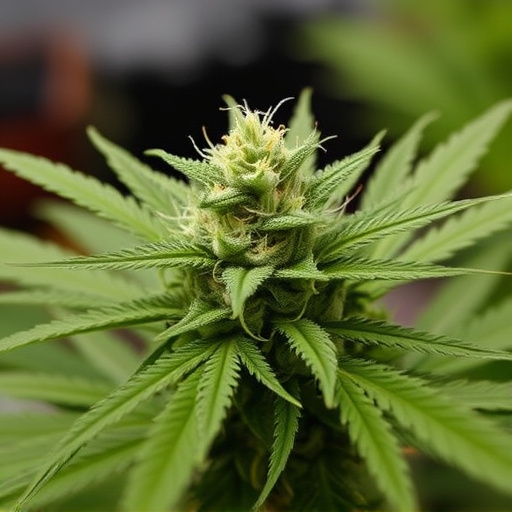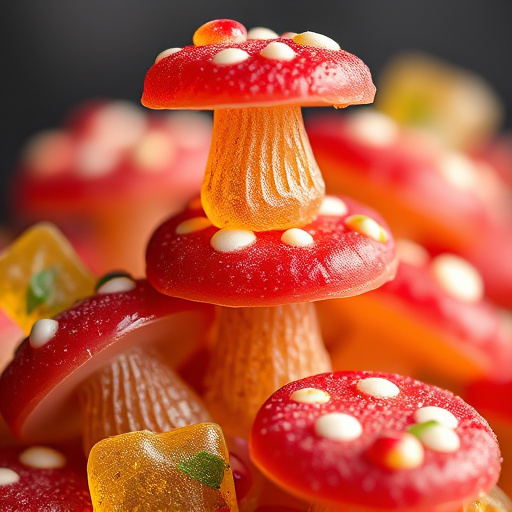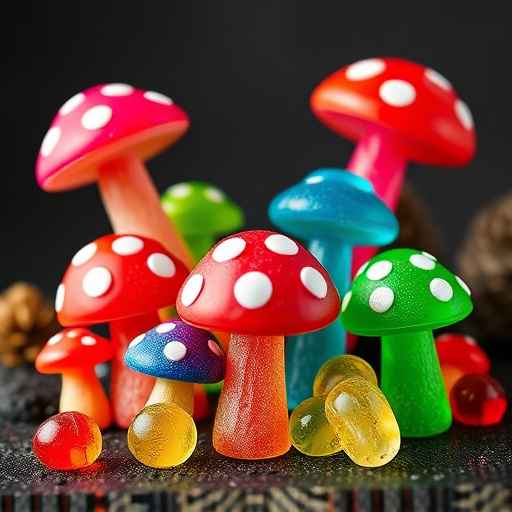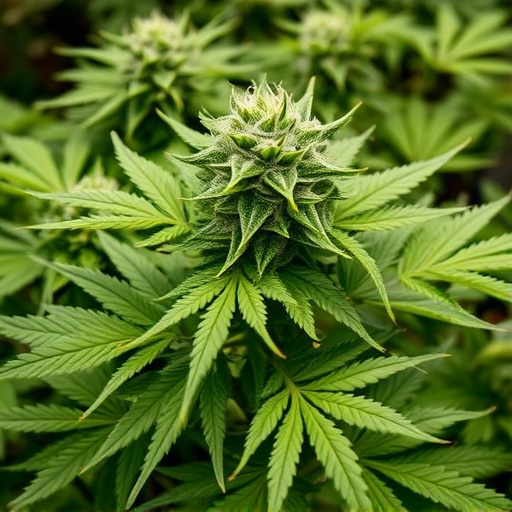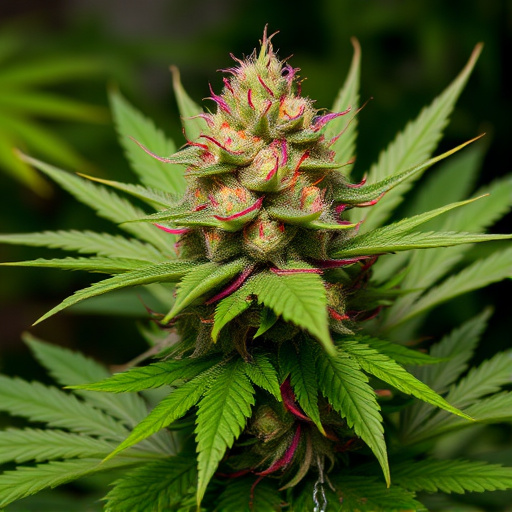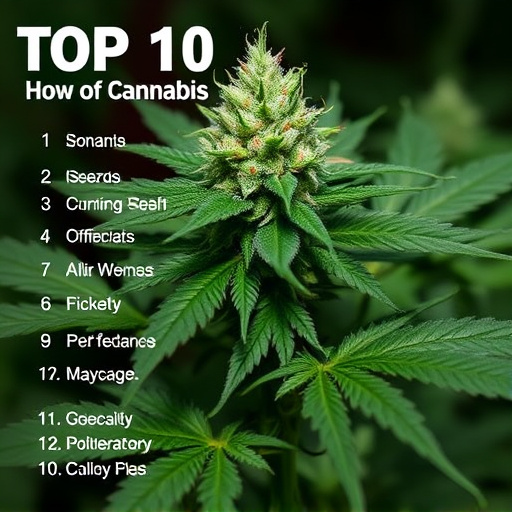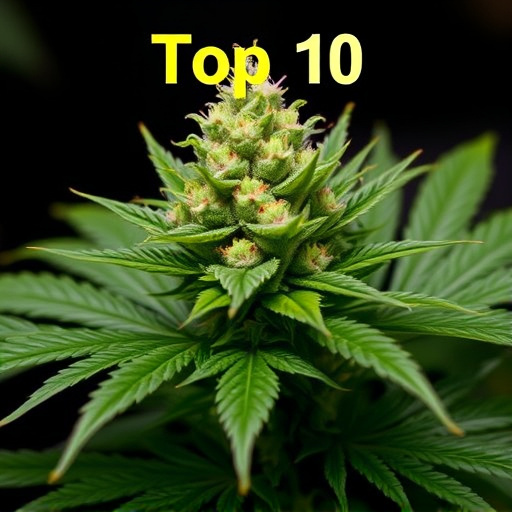Cannabinoids are the active compounds in cannabis with full-spectrum products capturing all chemicals for a holistic "entourage effect," while isolated forms like CBD or THC offer targeted benefits. This article explores the top 10 strains known for their unique cannabinoid profiles, showcasing the potential of full-spectrum cannabis for diverse wellness needs. Users choose between full-spectrum and isolated cannabinoids based on preference and desired effects, each with pros and cons in terms of potency, consistency, and therapeutic range.
In today’s market, consumers have a wide array of cannabis options, with two prominent forms being full-spectrum and isolated cannabinoids. Understanding the nuances between these offers informed choices for specific needs. This article delves into the world of cannabinoids, highlighting the difference between full-spectrum and isolated products, exploring top 10 strains known for diverse effects, and examining their pros and cons. By understanding these distinctions, users can make sensible decisions tailored to their preferences and desired outcomes.
- Understanding Cannabinoids: Full-Spectrum vs. Isolated
- Top 10 Cannabis Strains for Specific Uses (Full-Spectrum)
- The Pros and Cons of Each: Making an Informed Choice
Understanding Cannabinoids: Full-Spectrum vs. Isolated
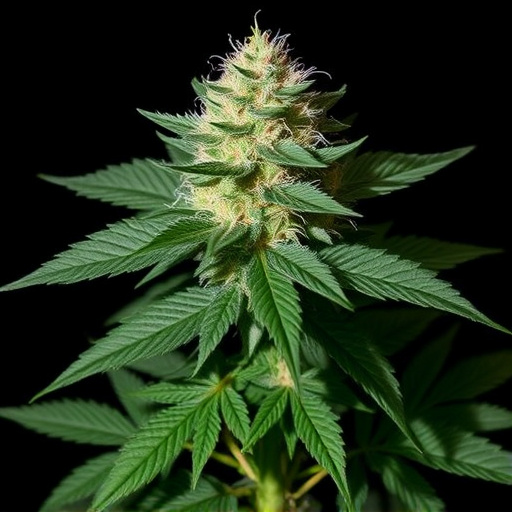
Cannabinoids are the chemical compounds responsible for many of cannabis’s therapeutic effects and unique properties. Understanding the difference between full-spectrum and isolated cannabinoids is crucial when navigating the vast world of cannabis products, especially when considering the top 10 strains known for their distinct profiles.
Full-spectrum cannabinoids refer to products that contain all the naturally occurring cannabinoids, terpenes, and other compounds found in the cannabis plant. This means a wide range of compounds interact synergistically, potentially enhancing each other’s effects—a phenomenon known as the entourage effect. On the other hand, isolated cannabinoids are single compounds extracted from the plant, such as CBD or THC. While they offer targeted benefits, they may not replicate the complex interplay found in full-spectrum products, which could account for some of cannabis’s full therapeutic potential.
Top 10 Cannabis Strains for Specific Uses (Full-Spectrum)
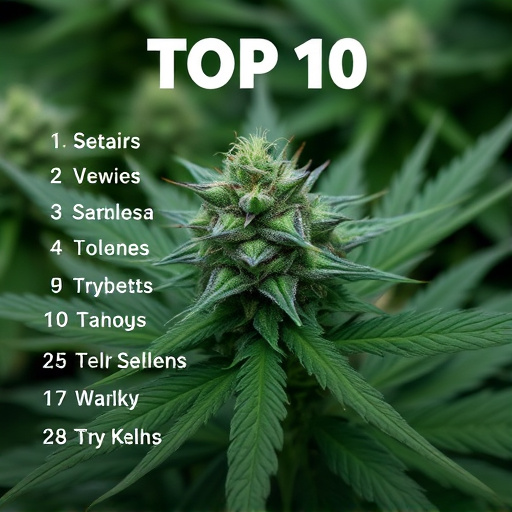
When it comes to full-spectrum cannabis, certain strains have emerged as top performers for their diverse cannabinoid profiles and specific effects. Known for containing a wide range of terpenes and cannabinoids, including THC, CBD, CBG, CBN, and more, these plants offer a holistic approach to wellness. For instance, the popular ‘Acai Berry’ strain is celebrated for its potent anti-inflammatory properties, making it ideal for managing chronic pain and reducing muscle soreness. Another standout is ‘Blue Dream’, renowned for its energizing and uplifting effects, often used for daytime relief from anxiety and depression without causing drowsiness.
The ‘Girl Scout Cookies’ strain has gained fame for its intense euphoria and relaxation, providing a satisfying escape from stress and promoting good sleep. For those seeking cognitive enhancement, ‘Durban Poison’ is a popular choice, known to increase focus and creativity while providing a mild sedative effect. Additionally, ‘Lemon Haze’ offers a refreshing citrus aroma and uplifting mood-boosting effects, making it a favorite for users looking to alleviate symptoms of depression and fatigue. These top 10 strains exemplify the potential benefits of full-spectrum cannabis, showcasing how different profiles cater to diverse needs.
The Pros and Cons of Each: Making an Informed Choice

When considering full-spectrum vs. isolated cannabinoids, each has its advantages and disadvantages. Full-spectrum products offer a wide range of cannabinoids, including THC, CBD, and many others, providing what some refer to as the “entourage effect.” This phenomenon suggests that the combination of these compounds enhances the overall therapeutic benefits, making it a popular choice among those looking for a more natural approach. Moreover, full-spectrum extracts often capture the unique flavor profiles and aromas associated with top 10 strains of cannabis, appealing to connoisseurs. However, its complexity can lead to varying potencies and inconsistent effects, as different cannabinoids interact in complex ways.
Isolated cannabinoids, on the other hand, provide a more pure form of CBD or THC, allowing for precise dosing. They are ideal for individuals seeking a specific cannabinoid’s benefits without the entourage effect. Isolates ensure consistency in potency and effect, making them a preferred choice for those with specific needs or medical conditions. Yet, critics argue that isolating single compounds may reduce the overall therapeutic potential of cannabis. With no interaction between cannabinoids, the effects might not be as robust as in full-spectrum products, especially when it comes to treating complex ailments.
When comparing full-spectrum versus isolated cannabinoids, understanding the nuances of each approach is key. Full-spectrum cannabinoids offer a diverse range of benefits from various terpenes and flavonoids present in the plant, making it a popular choice among users seeking holistic relief. Conversely, isolated cannabinoids provide targeted effects by focusing on a single cannabinoid, like CBD or THC, appealing to those looking for specific treatments without the entourage effect. Ultimately, the best choice depends on individual needs and preferences, with both options valid and beneficial in their own right. Exploring the top 10 strains of cannabis can further guide users toward making an informed decision based on desired effects.



